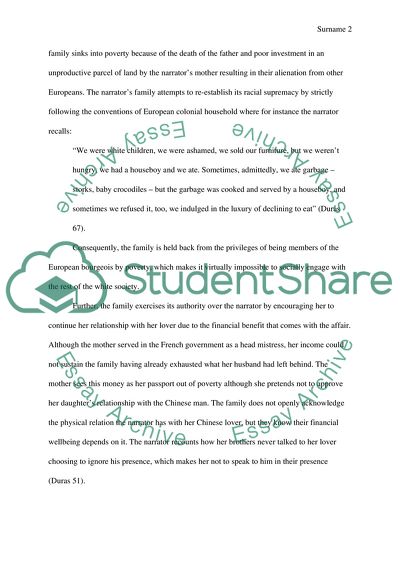Cite this document
(Gender and Power Dynamic in The Lover by Marguerite Duras Essay, n.d.)
Gender and Power Dynamic in The Lover by Marguerite Duras Essay. https://studentshare.org/literature/1816993-gender-and-power-dynamic-in-the-lover-by-marguerite-duras
Gender and Power Dynamic in The Lover by Marguerite Duras Essay. https://studentshare.org/literature/1816993-gender-and-power-dynamic-in-the-lover-by-marguerite-duras
(Gender and Power Dynamic in The Lover by Marguerite Duras Essay)
Gender and Power Dynamic in The Lover by Marguerite Duras Essay. https://studentshare.org/literature/1816993-gender-and-power-dynamic-in-the-lover-by-marguerite-duras.
Gender and Power Dynamic in The Lover by Marguerite Duras Essay. https://studentshare.org/literature/1816993-gender-and-power-dynamic-in-the-lover-by-marguerite-duras.
“Gender and Power Dynamic in The Lover by Marguerite Duras Essay”. https://studentshare.org/literature/1816993-gender-and-power-dynamic-in-the-lover-by-marguerite-duras.


